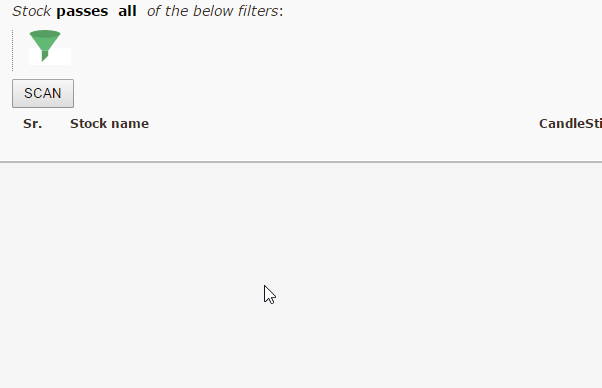Doji pattern where the open of a stock equals its close, the high is greater than the close & low is less than the close.
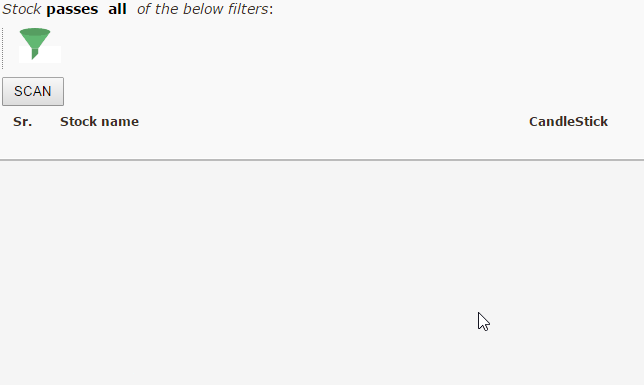
Updates, Tutorials & News
Doji pattern where the open of a stock equals its close, the high is greater than the close & low is less than the close.

This is a combination of 2 scans, “Stocks with rising prices & increase in volume” & “Stocks with falling prices & Increase in volume”. This example show’s how multiple scans can be combined into a single scan, showing stocks from both of the 2 individual scans.
Notice the use of a new sub-filter, with ANY to specify if either of the 2 filters below it is true.
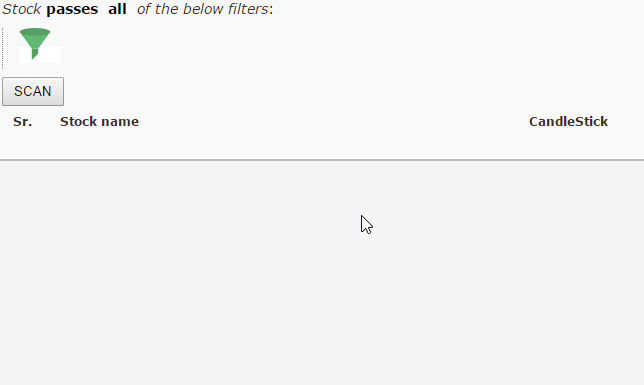
Filter stocks that have seen an sudden rise in their volume by over 5x times the average volume over the past 10 trading sessions and have dropped more than 5% today.
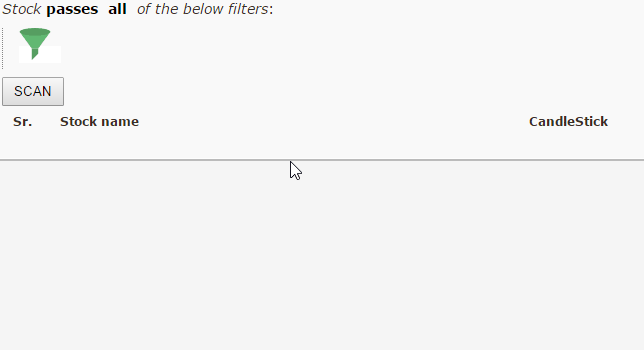
Filter stocks that have seen an sudden rise in their volume by over 5x times the average volume over the past 10 trading sessions and have gained more than 5% today.
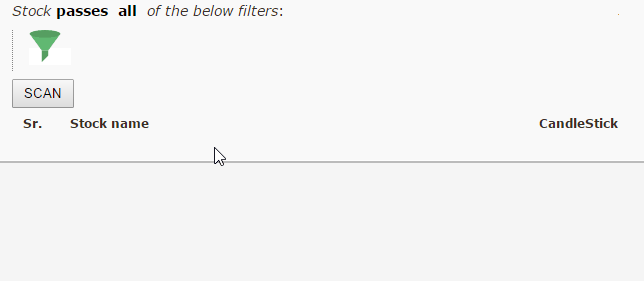
Scan stocks where the 50 Simple moving average(SMA) has crossed below the 200 Simple moving average . “Crossed below” specifies that the 50 SMA was above the 200 SMA a day prior, but has closed below it today.
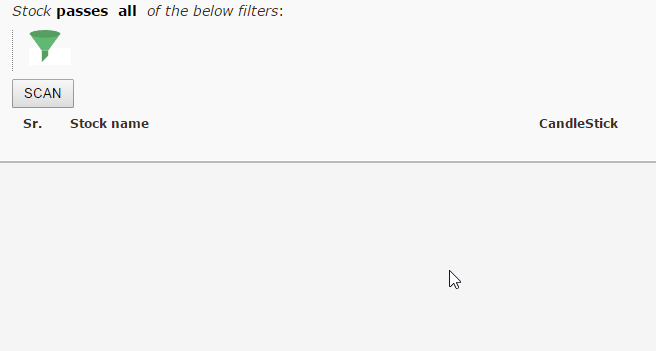
Scan stocks where the 50 Simple moving average(SMA) has crossed above the 200 Simple moving average . “Crossed above ” specifies that the 50 SMA was below the 200 SMA a day prior, but has closed above it today.
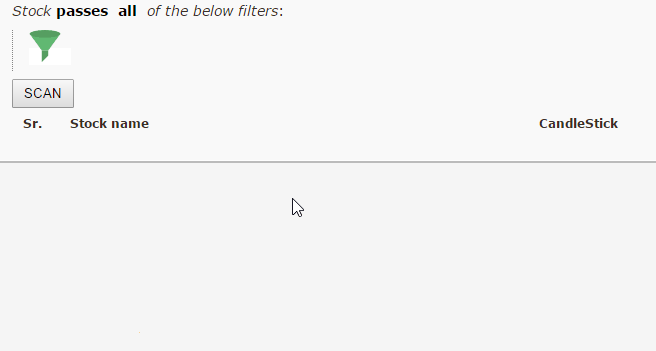
MACD bullish and bearish breakouts, showing MACD Signal crossing above & below MACD line using the default parameters of (26,12,9)
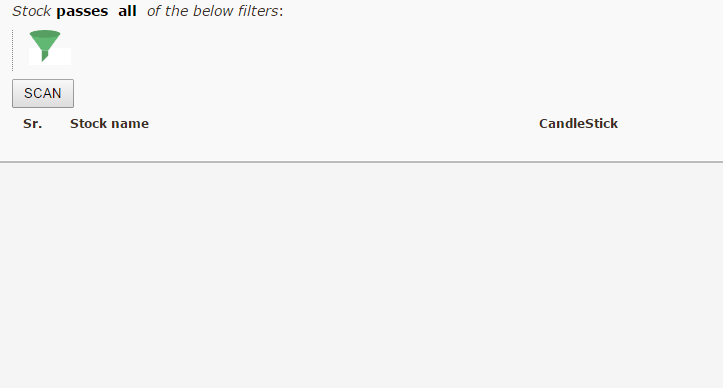
Scanning stocks that have touched their 52-week high OR 52-week low, 52 weeks consists of 252 trading days. We’ll be using our Min/Max functions with a duration of 252 days, along with the “high/low” stock attribute, to filter such stocks.
Scanner: 52-week high/low scan
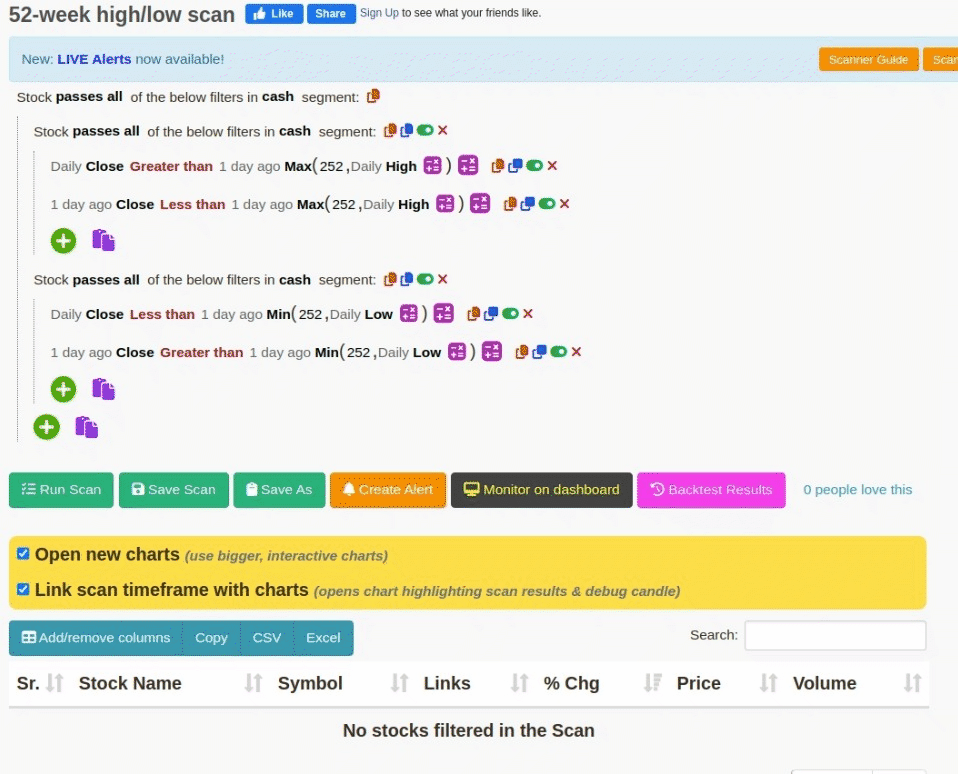
Scan stocks that have opened Gapup OR Gapdown from their yesterdays close. A stock passes these filters if it has opened 3% higher OR 3% lower when compared with its previous day close.
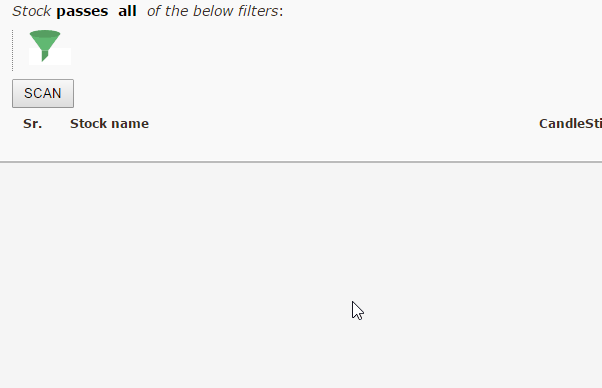
Williams %R ranges from 0 to -100, we search for stocks that are in the oversold(-80) region OR overbought(-20) region. Both Overbought & Oversold filters are matched via the “ANY” sub-filter condition in a single scan
